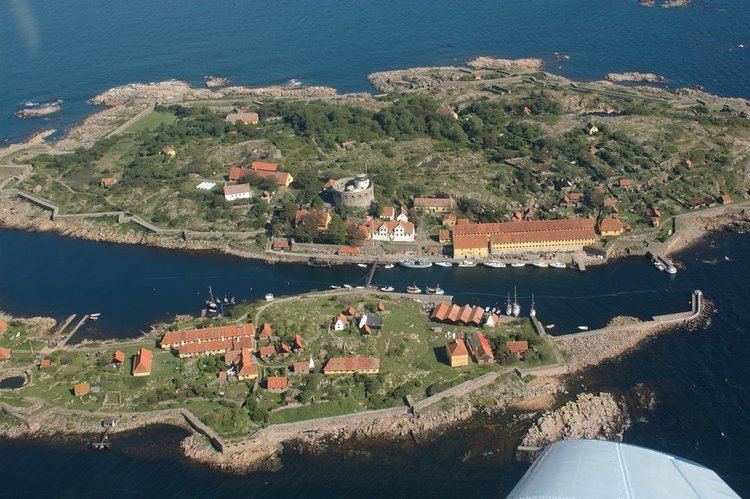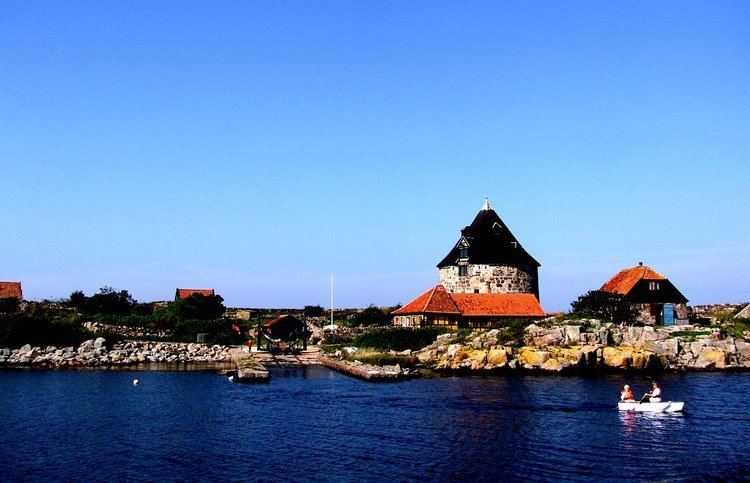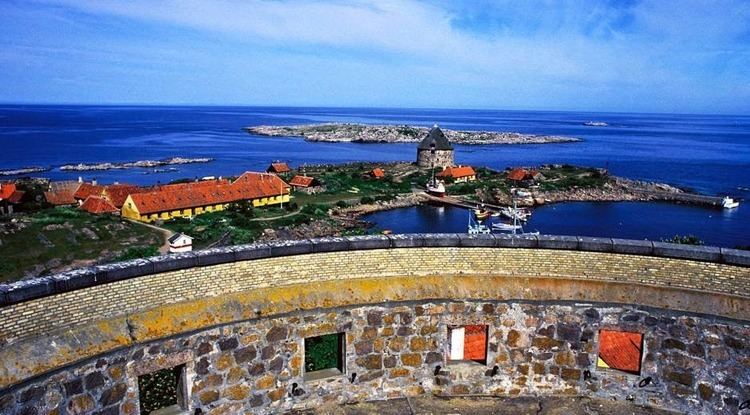Type Naval fortress | In use 1684-1855 (1863) Year built 1684 Islands Græsholm, Frederiksø | |
 | ||
Points of interest Store Tårn, Lille Tårn, Nyhavns Batteri, Kongens Bastion, Coucherons Bastion | ||
Gudhjem christians ertholmene bornholm denmark d nemark
Ertholmene, generally called Christiansø, also by Statistics Denmark, is a small archipelago situated approximately 18 km northeast of Bornholm in the Baltic Sea. Its permanent population is 78 (as of 2017) and its area is 39 hectares (0.39 km2) (0.16 sq mi). Statistically it is part of Landsdel Bornholm. Ertholmene belongs to Denmark and has the country's easternmost point.
Contents
- Gudhjem christians ertholmene bornholm denmark d nemark
- Ertholmene
- HistoryEdit
- Administrative statusEdit
- TaxationEdit
- References

Ertholmene consists of three main islands, Christiansø (named after King Christian V), Frederiksø (named after King Frederick IV) and Græsholm, plus a number of minor rocks and skerries. The best known of the latter are Tat and Østerskær, Denmark's easternmost point. Christiansø makes up 22.3 hectares (0.0861 sq mi), Frederiksø 4 (0.01544 sq mi), and Græsholm 11 hectares (0.04247 sq mi). Only Christiansø and Frederiksø are inhabited, while Græsholm is a bird reserve. The sound between Christiansø and Frederiksø, a well-sheltered natural harbour, is crossed by a pedestrian bridge that is pulled aside to accommodate larger vessels.

Ertholmene
HistoryEdit

Fishermen from Bornholm have used Ertholmene for temporary shelter since the Middle Ages. The first permanent inhabitation was the result of the Danish-Swedish conflicts in the late 17th century. As Denmark needed a naval base in the central Baltic Sea, a fort was built on Christiansø and Frederiksø in 1684 which served as an outpost for the Danish Navy until 1855. Christiansø Church originally served the garrison. The population peaked at the census in 1810 which showed 829 inhabitants. They were soldiers and were there because of the Gunboat War. Many of the historical buildings now serve as living quarters for the local population, and some are rented, year after year, to regular summer residents. The islands' external appearance has changed very little in over 300 years. Girdled by thick granite walls with old cannons pointed seaward, Christiansø is a picturesque tourist spot seemingly frozen in time. A former part of the fort, Store Tårn has housed the Christiansø Lighthouse for the past 200 years, and a small round tower on Frederiksø, Lille Tårn, serves as a museum.
Administrative statusEdit

The islands are an unincorporated area that does not belong to either a municipality or a region. Instead they are state property governed by an administrator, appointed by the Danish ministry of defence, with responsibility the tasks normally performed by municipalities and other public sector civil services. The major sources of income are fishery and tourism. There are 80,000 tourists per year, mostly day visitors arriving via Bornholm. Ertholmene is also a popular destination for yachts.
TaxationEdit

The islanders, who do not pay municipal taxes of any kind and were never part of a municipality, will be exempt from the central government "Health Contribution" tax (Sundhedsbidrag) which stood at 8% when it was introduced 1 January 2007 with Kommunalreformen ("The Municipal Reform" of 2007), because it is anticipated the relatively isolated islets would otherwise be abandoned. This tax replaced the county tax, which the islanders were also exempt from paying, not being part of a county. From 1 January 2019 this tax will be abolished, while income taxes in the lowest bracket will be raised instead. In 2012 this tax was lowered to 7%, 2013 6%, 2014 5%, 2015 4%, 2016 3%, 2017 2%, 2018 1%.
